Which Actor Is the Best Big Screen Batman: Pattinson, Affleck, Bale, Clooney, Kilmer, or Keaton?

- Oops!Something went wrong.Please try again later.
- Oops!Something went wrong.Please try again later.
- Oops!Something went wrong.Please try again later.
- Oops!Something went wrong.Please try again later.
- Oops!Something went wrong.Please try again later.
- Oops!Something went wrong.Please try again later.
- Oops!Something went wrong.Please try again later.
- Oops!Something went wrong.Please try again later.
- Oops!Something went wrong.Please try again later.
- Oops!Something went wrong.Please try again later.
- Oops!Something went wrong.Please try again later.
Over the past three decades, the beats and expectations of the modern Batman movie — and, thanks to the rapid expansion of the DC universe, even the modern Batman-adjacent movie — have remained relatively static. And yet, the man behind the cape and cowl has changed, on average, twice a decade.
When Tim Burton relaunched the popular superhero as a marquee name in 1989, the tangled webs of both the DC Extended Universe and the Marvel Cinematic Universe were a distant glimmer in Hollywood’s eye, and the last time a superhero film had topped the box office had been way back in 1981 (“Superman II”; its 1983 followup, “Superman III,” didn’t crack that year’s top 10). Burton’s “Batman” eventually spawned four films…and three stars, with original star Michael Keaton only sticking around for two entries, followed by single showings for both Val Kilmer and George Clooney.
More from IndieWire
Paul Dano's Performance as Brian Wilson Helped Inspire His Riddler Character in 'The Batman'
'The Batman' Director Says Paul Dano Tried Around 200 Takes to Get Pivotal Riddler Moment Right
In 2005, Christopher Nolan took the whole “dark and gritty” thing to entirely new level with his Dark Knight trilogy, starring Christian Bale in three films that a) made tons of money and b) re-established that Batman could indeed by a 21st century movie star. No wonder that DC was so eager to inject the Gotham detective/bat into its continually expanding film franchise, even if both Nolan and Bale were very much out of the Batman biz.
Enter: Batfleck (Ben Affleck), who took up the mantle for a pair of films (“Batman v Superman: Dawn of Justice,” “Justice League”) and seemingly endless cameos in other DC outings, even prepping his own standalone film, which never quite took flight. Affleck’s Batman has never gotten his very solo outing, but with the long-awaited release of Matt Reeves’ “The Batman,” a whole new Bruce Wayne gets to spread his wings: Robert Pattinson.
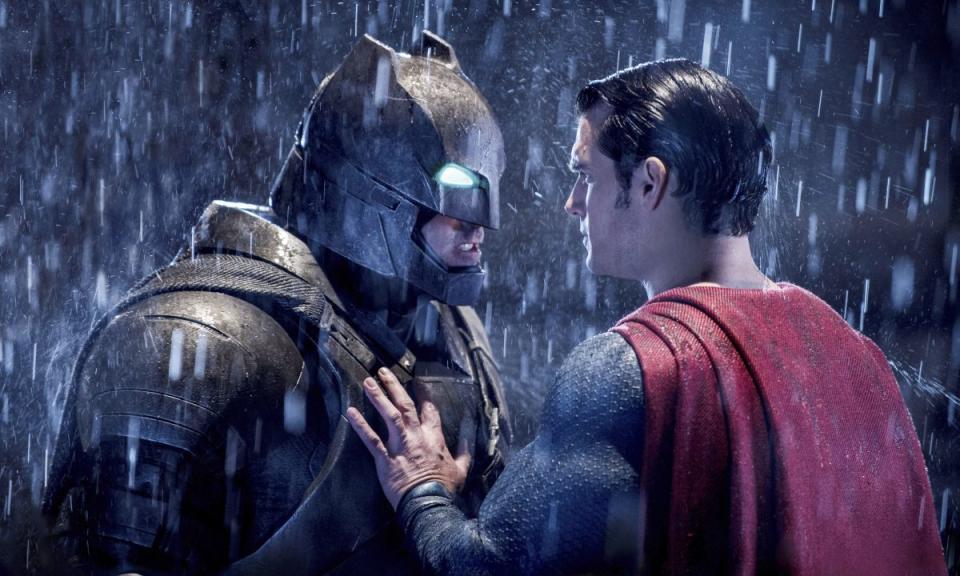
Warner Bros/DC Comics/Kobal/REX/Shutterstock
Existing both firmly inside the well-trod Batman we already know (orphaned, goth, haunted, very angry indeed) and outside the confines of the DCEU (no, The Flash and Wonder Woman never show up; better yet, there’s not a single moment in this grim crime epic where there’s even the possibility that they might), Reeves’ take on the crime-fighting superhero might not be reinventing the wheel, but that’s never been the point of the Batman mythos.
But no matter the seeming repetitiveness of the beloved character’s cinematic oeuvre, at least each actor who has taken up the latex suit has brought their own bent to the material. And, with yet another Batman poised to swoop into theaters, it’s time to consider the inevitable question: which is the best big screen Batman, and why? Ahead, IndieWire’s own film team attempts to come to a reasonable answer.
KATE ERBLAND: It’s possible I am misremembering this clearly essential part of my own childhood, but stuck inside my brain is a distinct memory of going to see Burton’s 1989 “Batman” — 126 minutes, a very dark PG-13 outing — as a small child. Perhaps that’s why when I think “movie Batman,” it’s Michael Keaton who still springs to mind, even after decades of brand-new Batmen lighting up the big screen. Keaton wasn’t a popular choice for the role, given that his then-current Hollywood brand was mostly “funny guy,” but the heat off of Burton’s 1988 “Beetlejuice,” which saw Keaton basically playing a superhero villain in a haunted house comedy freakfest, helped shift what the industry thought he was capable of.
And Keaton is indeed very capable in the role, moving between playboy billionaire Bruce Wayne and moody superhero Batman with relative ease. Burton’s film was, at the time, dinged for being too dark, but Keaton (and top-billed co-star Jack Nicholson) added real humor to the thing. Being known for his comedy chops may have been initially seen as a black mark against Keaton, but it automatically builds in a new layer to the whole thing. If he looks a little bemused during the more serious elements of the film (which is also, somehow, one of the more cartoonish modern entries in Batman lore), that checks out; if Keaton is amused, we all can be. (Small moment to stop and ponder the unquestionably funniest scene in any Batman movie.) Keaton offered a combination of superheroic standoffishness and hard-won “wait, he’s into bats??” winking that the latest iterations have mostly forgotten. It’s, to use an often overused term, iconic.
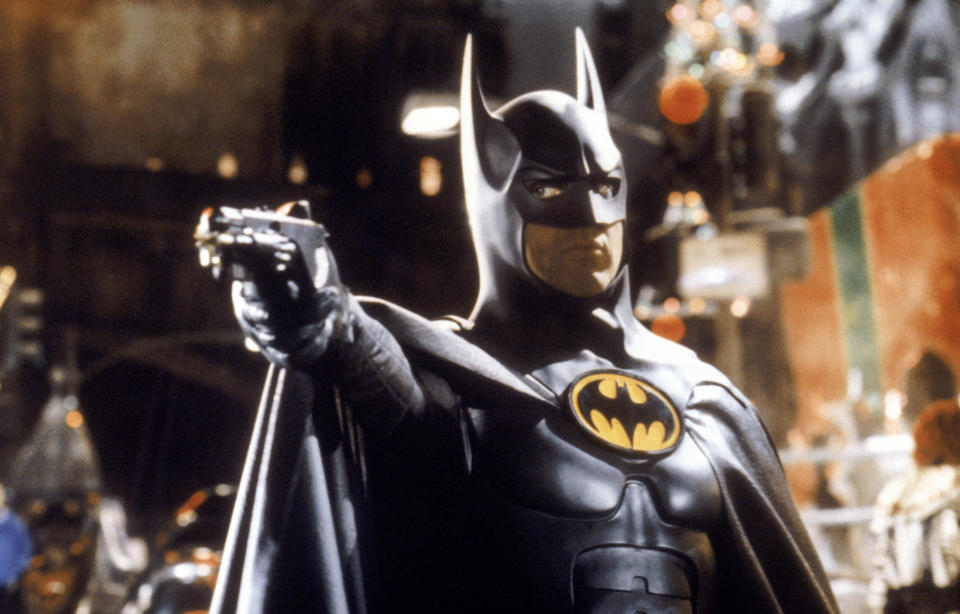
©Warner Bros/Courtesy Everett Collection
Is it any surprise that, of the other Burton-Schumacher Batmen, it’s only Keaton who has been asked back into the fold? He might not be the best big screen Batman, but he set a high standard and a unique worldview that no other contemporary performer has been able to quite match.
ERIC KOHN: No, it’s not a surprise that Keaton has been invited back into the Batman EU for the multiverse plot of “The Flash,” though given the deft manner in which “Spider-Man: No Way Home” addressed the range of actors who played the web-slinger by putting them all back to work, I wouldn’t be surprised if the DC team is kicking themselves over not coming up with this concept first. Then again, it’s hard to imagine that Clooney and Kilmer (who has limited speech abilities) would want to wade back into a franchise that tarnished both of their careers and didn’t give them much to do as actors. Meanwhile, Affleck and Bale don’t strike me as the types of people who like to have their meticulous work compared to anyone in the same frame.
If I had to pick one performance from all of those, the trophy goes to Bale by a mile, if only because his brand of intense screen presence always dominates the frame. Now, though, Pattinson offers some stiff competition on a relative scale. The two of them both seem to be fully committed to the wavelengths of the movies they’re in, and these movies share a certain dreary worldview. When they take the mask off, you can see them mining for substance in real time. But they don’t take the mask off nearly enough — which is the issue with this performative challenge in the first place.
Full disclosure: I’m resistant to any firm designation of the “best” Batman performance because, based on all existing evidence, the whole concept of “playing” Batman is divorced from the specific talents of any given performance. There’s a reason why two people have won Oscars for the Joker, rather than his nemesis: Batman in the batsuit homogenizes the singular presence of any one actor.
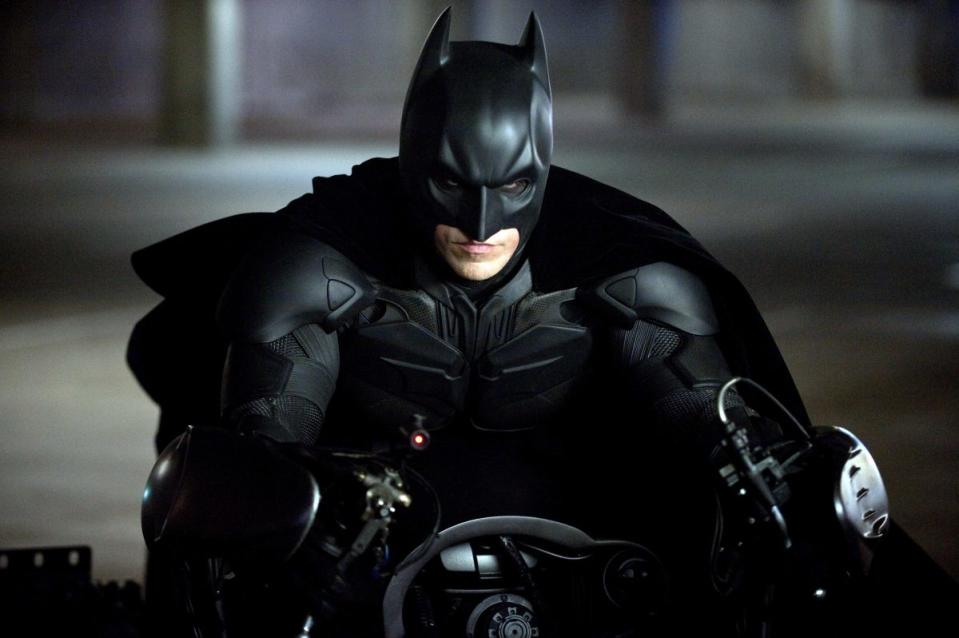
©Warner Bros/courtesy Everett Collection / Everett Collection
Having said that, Kate, I can see why Keaton’s performance left an impression on you since it was so well-situated within Tim Burton’s aesthetic. My own nostalgia-tinted prize to a Batman interpretation from that era would have to go to Kevin Conroy for his voicework on “Batman: The Animated Series,” which built a whole world out of Burton’s German Expressionist pastiche. (By the way, the best “Batman” movie is “Mask of the Phantasm.”)
But show creator Bruce Timm’s version Batman is still yet another growling avenger behind a mask, and that’s the point. As Val Kilmer explains while sharing his frustrations in last year’s biographical documentary “Val,” the batsuit doesn’t leave much room for committed thespians to try anything new, aside from the best paycheck of their careers.
So what does Pattinson bring to the role? I like David’s description in his review of of a performance defined by “90 percent clenching.” I would say that Pattinson clenches pretty well. In everything from “Good Time” to “The Lighthouse,” the guy has turned struggles of messy, moody characters into high art, and he channels some of that in the handful of occasions where he’s recognizable. I wish there were more of them.
We’ve never had a Batman movie performance that wasn’t patterned on a preexisting idea of the character, even as the franchise has swung from serious to campy and back again. That’s why, for all the intrigue of Pattinson’s grunge rock interpretation, there’s an air of familiarity that clouds the whole thing. Matt Reeves has a tremendous knack for mise-en-scene, but “The Batman” still feels like a routine. Just a few years after Christopher Nolan moved on, another talented filmmaker is mining for dark, meaningful details in a scenario that is patently ridiculous even as it forces its hero to play everything with a straight face. And how do you even play it with any face, straight or otherwise, when nobody can see even see it? Due respect to Pedro Pascal, but “The Mandalorian” only really gives him something to do when we can witness him doing it.
As for Batman, I’m not sure we’ve seen any actor actually do anything memorable in the suit itself, but maybe one of you can convince me otherwise.
DAVID EHRLICH: Hey guys, I think I see the problem here: You’re both forgetting about a little masterpiece I like to call “The LEGO Batman Movie” (because that is what it’s called). A manic cartoon made by people who refused to accept that “Why so serious?” was a rhetorical question, Chris McKay’s PG-rated film isn’t just a hilarious parody of the Dark Knight, it’s also the most probing analysis of the man behind the mask. Eric is all too right that every Batman movie performance has been patterned on a preexisting idea of the character — Pattinson’s introverted turn is defined by its conscious pivot away from the playboy-philanthropist schtick that had come before — but the genius of Will Arnett’s growling take on “the greatest orphan of all time” is that it turns that idea inside out.
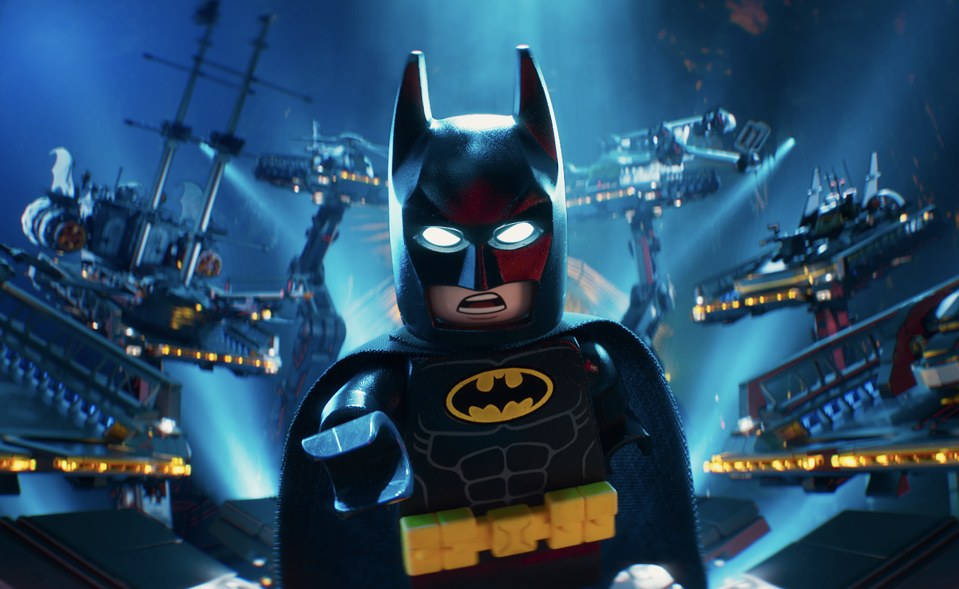
Warner Bros. Pictures/courtesy Everett Collection
It uses its irreverent comic tone to bypass what Batman represents and meaningfully explore why Bruce Wayne had to invent him. Arnett’s Batman doesn’t wear the mask because it’s a symbol that instills fear in his enemies, he hides behind it because he’s so afraid of recognizing himself. This Bruce Wayne is so traumatized by the loss of his parents — so mortally afraid of losing anyone else — that he weaponizes his loneliness into the only superpower that Batman has ever had. His Batcave isn’t a base so much as a refuge, his solitude less a condition of his work as a vigilante than the reason for doing it in the first place.
“The LEGO Batman Movie” is silly as hell and self-reflexive to a degree that makes “Spider-Man: No Way Home” feel like reheated leftovers, but it’s precisely because the film is in such active conversation with previous iterations of the franchise that it’s able to say something different with the Dark Knight. No disrespect to Pattinson, whose commitment to the My Chemical Romance of it all is the cornerstone of the world that Matt Reeves builds around his character, but Will Arnett mines more genuine pain in the way his Bruce Wayne cackles at the climatic scene of “Jerry Maguire” than “The Batman” does in its entire three-hour running time (and his performance is nothing if not tied to his very specific talents as an actor).
Kate is right to remind us that Batman hasn’t always been so bleak, and she might even be right to describe the “Partyman” scene as the franchise’s funniest moment, but Arnett is the big screen’s only truly comic Batman. And by inviting us to look at the Caped Crusader as “an unsupervised adult man karate-chopping poor people in a Halloween costume,” he allows us to divorce the man behind the mask from the stiff-necked icon he’s become. I was net positive on Reeves’ film, and thrilled to see such a mega-budget superhero movie so thoroughly adopt the strictures of another genre, but the conversation we’re having only underlines how Bruce Wayne is the most compelling reason to keep making Batman movies.
ERBLAND: One major point to Pattinson’s take on Batman — which, to paraphrase David’s take on Arnett’s animated turn, really is a trauma-infested performance that has somehow both been done before and feels fresh in Reeves’ film — is that, despite all those other Batmen who have gone before (including the other ultra-dark and gritty Bale and Affleck takes), I’m still eager to see more from him. It’s been awhile since I’ve sidled up to a superhero film that will undoubtedly spawn at least two more outings — is anything just a single film any more? — and felt excited to see what happens next.
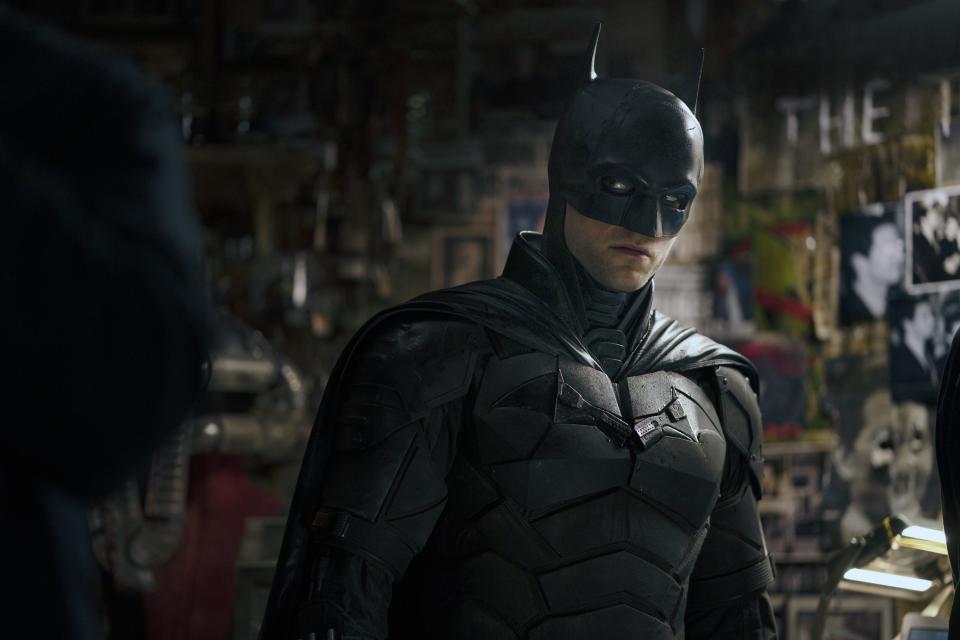
Warner Bros/Courtesy Everett Collection
One big reason why: while we’ve all gotten so used to the “dark and gritty” superhero, Pattinson and Reeves so further strip down that idea, making this Batman entirely a shell of his pain and anger (playboy Bruce Wayne? who’s that?) that we can’t help but anticipate what will happen when Bruce inevitably loosens up in subsequent outings.
I may love Keaton because of his inherent humor, but I admire Pattinson’s work here because it’s so devoid of that same element, leaving actual space in a story that’s been done over and over. He’s not an entirely new Batman, but he’s added a fresh wrinkle to a character we know very well. That’s something special.
Warner Bros. will release “The Batman” in theaters on Friday, March 4.
Best of IndieWire
Sign up for Indiewire's Newsletter. For the latest news, follow us on Facebook, Twitter, and Instagram.

